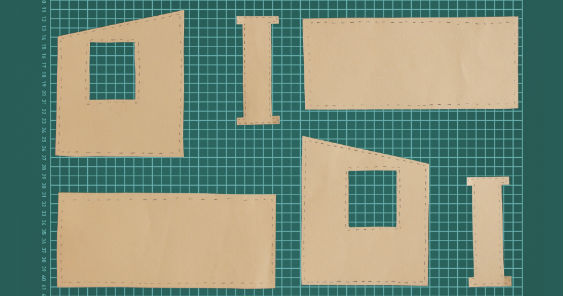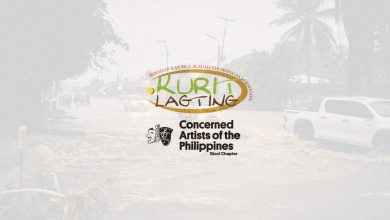by Charm Cabredo
Rogelio ‘Vonz’ Santos Jr., not an architect or a builder, took the initiative to provide a solution to a nagging problem.
MANILA – In the morning of April 18, 1906, a strong earthquake shook San Francisco awake. The rude awakening was followed by an even more catastrophic fire that left the city burning for three days, leaving a quarter of a million people homeless. It was during this time of dire need, from the rubble and ashes of nature’s destructive force, rose one of the first heavily documented case studies of post-disaster relief efforts to date, following the efforts’ focus from relief to recovery and reconstruction.
Disasters like the Great San Francisco Earthquake force us to rethink the issue of housing, beyond a reactive response to provide relief to a long term solution of providing one of man’s most basic needs: shelter. Shelter for people displaced by war, man-made and natural catastrophes.
While the Philippines is no stranger to typhoons and earthquakes, nothing prepared the country for the onslaught of Typhoon Yolanda on November 2013. The provinces of Eastern Visayas, Tacloban in particular, felt the brunt of the storm’s impact. “The preparation of the local governments and the national government agencies was not equal to the strength of the typhoon,” admits Corazón “Dinky” Solíman, head of the Department for Social Welfare and Development (DSWD), who oversaw the nation’s disaster response. And while the country and rest of the world scrambled to bring relief into the affected towns, a young entrepreneur was seized by an idea one night that kept him up assembling pieces of cardboard with tape coming up with an idea for a shelter that would later come to be known as the Butterfly House.
Rogelio “Vonz” Santos, Jr. was neither architect nor builder and yet he saw clearly that which Yolanda had exposed, our need to have a long term solution to solve the housing problem the country will have to face, relocating and providing homes for the 1.6 million or so families displaced by the storm. “We have to take action, because a storm happened, and more than a hundred days later, people are still homeless.” This call to action led Vonz to collaborate with interior designer Budji Layug and architect Royal Pineda in order to refine his idea. Two months later, a working prototype for the Butterfly House was revealed. It was a steel framed structure with wall panel options in polycarbonate, fiber cement boards or sawali (woven strips of bamboo). 3 The module was a creative solution meant to address key issues in disaster response shelters: speed of deployment and ease of set-up and cost-effectiveness.
Named because of the manner in which it unfolds, packed away, the Butterfly House is 2.4 meters long, 0.70 meters deep and 2.6 meters high. Keeping in mind the need for ease in transport, the modules can fit in a 40-foot container van. Once at the site, these modules can easily be unfolded to form the roof and walls of the shelter. 3 people can easily unpack the module and set-it up in less than 15 minutes. Depending on the needs of a community, these modules come in a basic 11.5 sqm. configuration, 15 sqm. configuration with the addition of a bathroom, and a 26 sqm. configuration called the Monarch which takes into consideration the minimum standards for socialised housing.

The genius of the design though was also its ability to be folded and packed away in case a need to evacuate arises. This was later put to the test a year after Typhoon Yolanda when Typhoon Ruby passed through Eastern Visayas last December 2014. A community of Butterfly Houses has already been set up in Tacloban. Vonz saw this as a chance to see if the houses would be able to withstand a storm as intended. Some houses were packed away and the others left standing. They were not disappointed. While other transitional housing units were damaged by the storm, 100% of the Butterfly House units, were intact. Interestingly, the units walls were clad in boards made from recycled tetra packs which were said to be watertight and inflammable.
This year, the Butterfly House Team is working with the PDRF and USAID to provide additional housing units and to put up a Butterfly Village of 250 homes. 50 units were set up in 3 days last September. The units came in a new configuration called the J-Model which is an 18 sq. module with the “wings” at right angles with each other.
In 1946, Charles Abrams wrote in “The Future of Housing”, “Housing in the twentieth century has been a continuing emergency.” The emergence of the Butterfly House brings hope. While we may not see the complete resolution of this pressing need for housing, we can be inspired by the actions of one man who spurred the actions of many, to also take a piece of cardboard to re-imagine shelter that can transform itself from an emergency response unit to a partner in the recovery and reconstruction process of communities displaced by conflict and calamity.
1. Design Like You Give a Damn, 100 years of Humanitarian Design, Kate Stohr, p.33
2. Tacloban: A Year After Haiyan, Kate Hodal. The Guardian, October 31, 2014.
3. The Butterfly House: A Housing Solution for Yolanda Victims, Lady May Martinez. asianjournal.com, February 20, 2014.
This article was first published in the November-December 2015 issue of adobo magazine.









